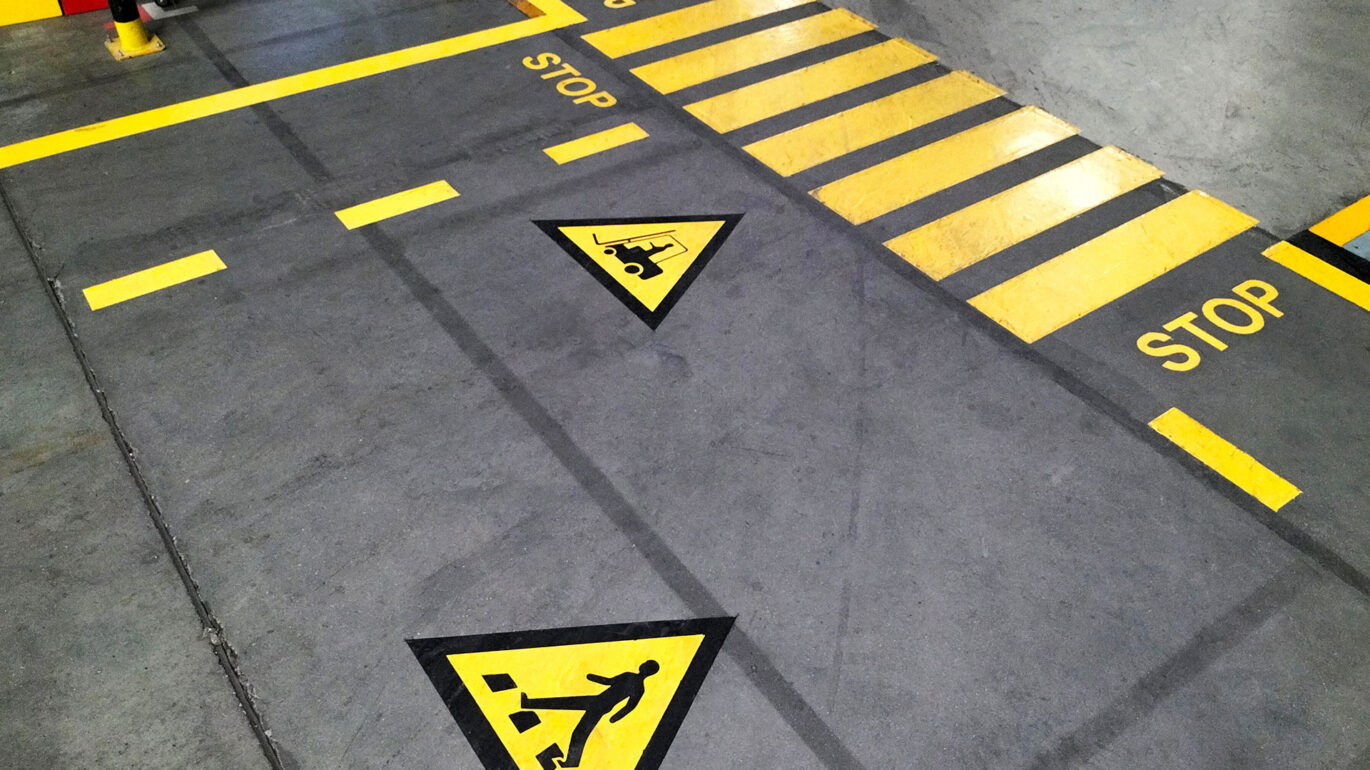IPEX is a leading manufacturer of thermoplastic piping systems for plumbing and mechanical applications in industrial, municipal, commercial and residential settings. Its injection moulding plant on Bermondsey Road in Toronto is one of several plants in Canada and part of a broader North American network.
When IPEX’s parent company, Aliaxis, identified lift truck and pedestrian safety as one of its high-priority global safety goals, the Toronto plant quickly sprang into action. One of its first steps was to get support and advice from WSPS Specialized Consultant Norm Kramer.
Working with Norm, Plant Manager Rod Huels and Health Safety and Environmental Specialist Seun Ayoola carried out a traffic management study and ultimately created an action plan to improve lift truck and pedestrian safety.
The plant, which employs 210 people, uses many lift trucks on its production floor to bring in supplies, move them to appropriate stations, and take finished products to the loading dock.
“The safe movement of mobile equipment around pedestrians is critical to prevent collisions and struck-by injuries,” says Norm. “These types of injuries are costly to both employee and employer. Ideally, there is a complete separation of pedestrians and mobile equipment, but that’s not always possible.”
That was the case with the Toronto plant.
“Lift truck operation in our facility is especially challenging due to space constraints, the proximity of workstations to lift truck traffic, and simultaneous lift truck activities on the production floor,” says Rod.
Working with WSPS, the plant put in place solutions that enhanced its traffic management and pedestrian safety program, providing an additional layer of protection for its employees. After implementing the enhanced program, plant management noted the added benefits of improved operational efficiency and bottom line results.
Q&A: improving pedestrian safety
Rod and Seun describe the process and the benefits:
- What role did WSPS play? Norm carried out a risk assessment, which included observing the activities in the plant, reviewing incident reports, carrying out interviews with lift truck operators, a shipper/receiver, a machine operator, pedestrians, and the worker member of the Joint Health and Safety Committee (JHSC), as well as reviewing training, and other safety related documentation. He then provided insightful recommendations for improving traffic management and pedestrian safety. Together, we developed and implemented an action plan.
- What improvements did you make? Based on the requirements of our internal safety standards and recommendations from Norm, including CSA B335, Safety Standard for Lift Trucks, we:
- Designated the shipping/dock areas as a lift-truck-exclusive zone (pedestrian traffic is prohibited in this area)
- Installed safety barriers in some locations to separate pedestrians from lift truck traffic
- Marked floors to improve pedestrian traffic predictability, including where pedestrians should walk to avoid mobile equipment
- Installed traffic detection systems at high-collision intersections within the plant – lights activated by sensors to indicate when traffic should stop and go
- Fitted all lift trucks with blue lights to warn pedestrians at blind corners, and red lights to warn of rear-end swing when turning
- Provided training for all lift truck operators and pedestrians to understand previous incidents, causes and controls – including expected behaviours enforced by management
- Launched a pilot program to reduce lift truck activities in some sections of the production floor by switching to the use of electric walkies for some activities
- Was it difficult to change the behaviours of lift truck operators and pedestrians? We have done a lot of work instilling safety as a value within the company culture and this foundational understanding is very helpful in getting everyone on board with safety initiatives.
That said, there are always challenges when implementing new systems, and awareness and reinforcement played key roles in implementing the improvements. By maintaining open channels of communication, we were able to understand challenges faced by employees (especially lift truck operators), modify behaviours and advance our safety goals.
Some employees used to walk quickly past lift trucks, assuming the operator could see them. Now, employees slow down, get operators’ attention, make eye contact, and move past them when they are given the signal. The training sessions were particularly helpful as they provided both the operators and pedestrians an opportunity to see from the other side of the divide and make necessary adjustments.
- What benefits have you noticed? Pedestrians’ reduced exposure to lift truck traffic and operators’ improved use of safe driving practices have resulted in a noticeable decline in near misses. By replacing lift trucks with walkies, we’ve also made it quicker and easier to move finished goods from the production floor.
We have also noticed fewer disruptions to lift truck operations in the lift-truck-exclusive zone after removing foot traffic in the shipping area. Overall, safety, productivity and efficiency have increased, bringing many positives to our business.
- What recommendations do you have for similar businesses dealing with pedestrian/traffic management issues? Don’t be afraid to get outside expertise to help you understand the hazards associated with lift truck operations and determine and manage risks. Establish clear communication with your workforce so they understand what you are doing and how it will improve their health and safety. Have a clear picture of what you want to achieve and start implementing changes gradually, with input from your team members.
How WSPS can help
Consulting
WSPS safety experts like Norm Kramer are on hand to help warehouse and distribution centres of any size conduct pedestrian safety and traffic management hazard assessments and implement solutions. Connect with a consultant to find out more.
Training
Videos
- Safety Tips: What are the fundamentals of a strong traffic management assessment and program?
- Safety Tips: What types of policies and procedures support a traffic management program?
Guides & Downloads



